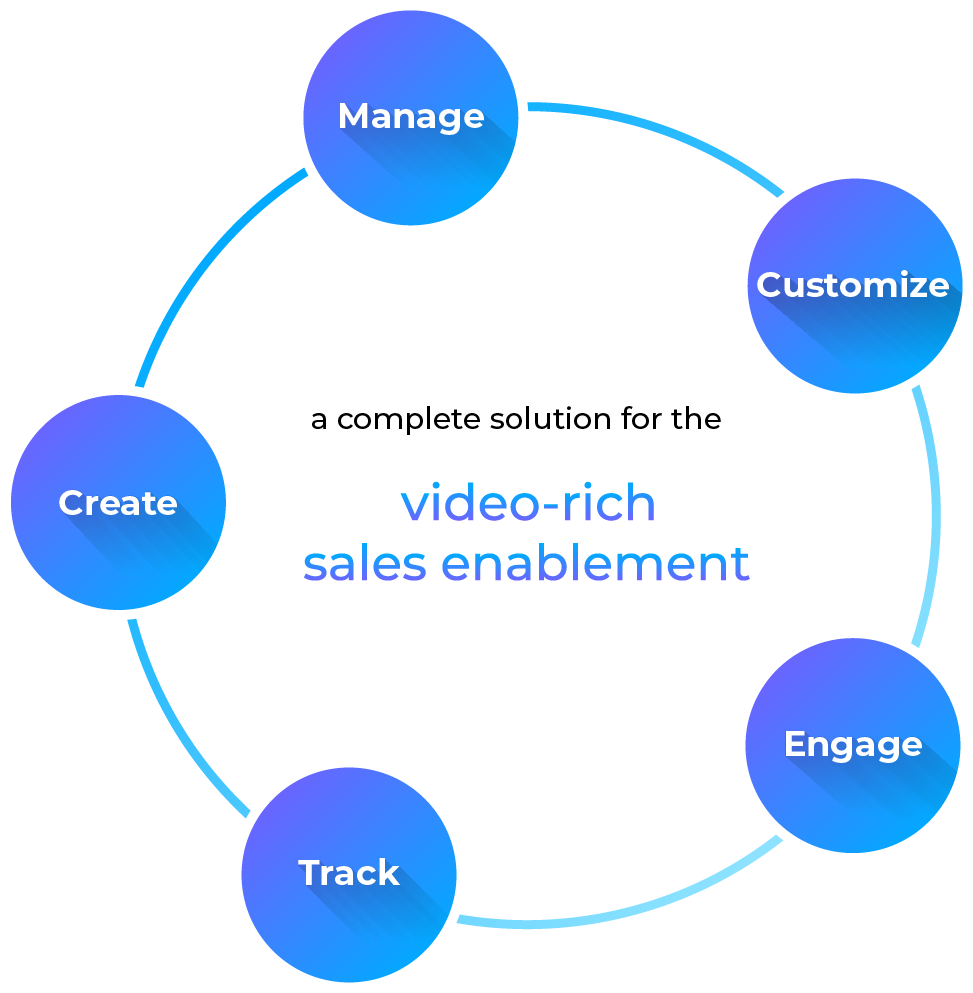Presentations are one of the most important tools used by a B2B sales team to engage an audience and to communicate their unique value proposition to the prospect. Unfortunately, most presentations do more harm than good for the following reasons:
- Monolithic and large “Presentation Decks” are overwhelming for the sales team to modify due to unpredictable dependencies between different slides in terms of messaging and navigation. This forces the sales team to use these decks as-is and without personalizing them for a specific customer situation. The audiences find such “canned presentations” highly irrelevant.
- Traditional presentation tools such as PowerPoint encourage bulleted text with monotonous presentation themes and slide templates. The audience quickly gets bored and distracted.
As a result, all the effort related to lead qualification, engagement and nurturing fail to bear results at the most critical juncture in the sales cycle. Outdated traditional sales enablement techniques related to presentations are a significant root cause of poor sales performance.
Effective sales enablement practice prescribes:
- A slide library that organizes presentation slides in appropriate categories that encourages the salesperson to easily personalize the presentation based on the prospect’s requirements.
- Each slide should minimize the use of bulleted texts and replace them with relevant images, illustrations, charts, videos and animations. To create these engaging visual elements, you might consider using a free video editor or leveraging short video platforms to produce custom animations or short video clips that enhance your presentation. This will engage the audience as well as make your slides self-explanatory. Furthermore, they will enable your team to consistently deliver your brand experience with greater confidence
This is why you should replace your traditional “presentation decks” with a rich media slide library.
What is a Rich Media Slide Library?
A rich media slide library is a collection of logically organized slides that enables a sales person to easily and quickly assemble an engaging and personalized presentation that is perceived by the audience as highly relevant to their needs and retains their attention during the entire pitch. Each slide uses appropriate rich media elements with minimal text to intuitively communicate the message.
Providing a slide library instead of ready-to-use presentation decks encourages the sales team to personalize the presentation with highly relevant content.
Minimizing text and enriching each slide with rich media elements ensures consistent delivery of your brand experience, engages audiences and retains their attention. The sales team feels more confident when delivering personalized, rich media presentations. Prospects love sharing such presentations internally with other decision makers.
Such a rich media slide library needs to be distributed through a cloud-based shared environment to ensure that the sales team always has access to the most updated slides. It should enable easy assembly of slides into relevant presentations and enable online sharing with the audience. A highly desirable feature is the ability to track if the prospect viewed the presentation after it was shared with them. This gives valuable insights into their purchasing intent to the sales team and helps close deals faster.
In addition to the slide library, also consider organizing your other rich media content in a cloud-based environment This will enable the sales teams to insert relevant content onto the slides to further personalize their presentation.
When do you use a Rich Media Slide Library?
Your sales team should use the Rich Media Slide Library EVERY TIME they have to present to B2B sales prospects. This has the following benefits:
- It will encourage them to think about the customer’s problem and select the appropriate slides to ensure that their presentation is relevant to customer’s needs.
- It will ensure that the sales team is using the most recently updated slides and content.
- It will keep the presentation focused and brief.
It should not take more than 5 minutes to drag and drop relevant slides from a logically organized library.
Key components of a Rich Media Slide Library
Marketing services and sales enablement teams should create appropriate slides for each for the following categories:
- Customer Problems and Pain-points – Create 1-3 slides explaining each customer problem in terms of the roles that experience the problem, root causes of the problem and consequences of inaction.
- Loss Calculator – A set of personalizable slides that enable a salesperson to quantify the losses that the prospect is facing due to the lack of value delivered by your offering.
- Solution Framework – A high level overview of your approach to solving the customer’s problem.
- Use case driven Guided Tours – breaks the overall solution framework into granular use cases and depicts how the features of your offering contribute to solving a customer’s problem.
- OCM Best Practices – A series of slides that describes how your team will ensure flawless deployment and adoption of your offering into the prospect’s organization and greatly de-risk their decision.
- Call to Action / Next Steps – A series of slides that propose the next steps following the presentation. These may include an offer to collaborate to diagnose the problem, build detailed requirements, help building a business case, or a proposal to finalize the purchase decision.
The slides should avoid the monotonous, uniform layout of slide templates. They should minimize the use of text and appropriately use rich media elements to intuitively and engagingly communicate your message.
Best Practices for Rich Media Slide Library
- Focus on Customer’s problems – instead of boasting about your company and offering. This will establish relevance and ensure better engagement.
- Avoid monotonous slide templates – instead, use the slide as an open canvas to depict your message. This will prevent your audience from getting easily bored and will enable you to communicate more freely.
- Minimize text on the slides – use rich media elements such as images, illustrations, infographics, charts, diagrams, animations, videos and 3D models. This will make your message easy to understand and retain the audience’s attention.
- Use “walk-in” videos – Use a full screen video on the first slide with vivid portrayals of people and situations with which the customer will identify. As your audience trickles in to the meeting, they will be glued to watching this video instead of getting distracted with their emails and text messages. The video subtly hints at the fact that you will soon be presenting something that is relevant to them.
- Build a rich media content library – This will make it easier for the presentation design companies to deliver rich media slides as well as for the sales team to personalize the slides with content relevant to each customer situation.
To learn more about other engagement objects, please see “9 Engagement Objects that fuel B2B Sales Enablement“.












